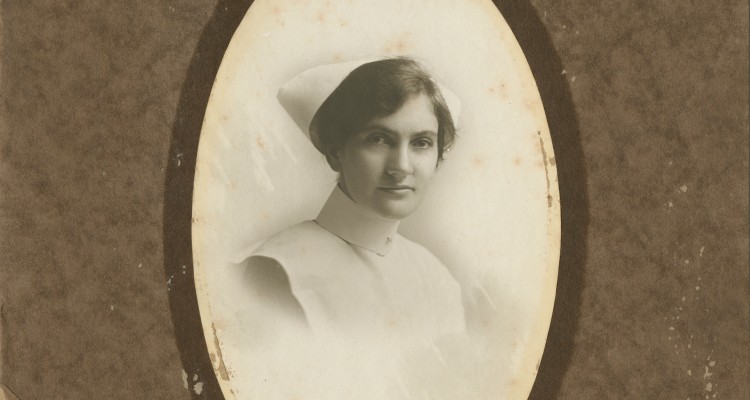
Sharing stories of service: Alice Ethel Imison WWI and WWII
Alice Imison was born in Laidley, Queensland, in 1893 and completed her three years of General Nurse Training at the Rockhampton Hospital in January 1917. She enlisted as a Staff Nurse in the Australian Army Nursing Service (AANS) at the Australian General Hospital at Kangaroo Point, Brisbane on 1 August 1917. As a member of No.6 Section Sea Transport Staff, a week later 24-year-old Staff Nurse Imison embarked from Sydney on HMAT A68 “Anchises” bound for Liverpool. On arrival in England, she was put on temporary duty at the 2nd Australian Auxiliary Hospital (AAH) in Southall, where she remained until 31 October 1917 when she was detached for service on a Transport Ship back to Australia. While with the Sea Transport Section, Alice embarked on another trip to London on 19 January 1918. Once again, she had a short turnaround time in London, arriving on 21 March 1918 and heading back to Australia by 4 April.

After her second trip, she transferred to the AANS India Service and sailed from Sydney on the HMAT Wiltshire on 9 November 1918 bound for Bombay. She served in two Hospitals in Bombay, the Colaba War Hospital, which mainly treated patients from the British garrisons in India, and then the Freeman Thomas War Hospital, where troops from the Mesopotamia Expeditionary Force were evacuated to due to illness. After about 5 months in Bombay, she was transferred to Rawalpindi (now Pakistan) where conditions were very harsh. Here she worked in the Hospital, on the Hospital Train and in the Headquarters. Nurses in India faced the challenges of extreme climate and very basic conditions as well as the cultural and language barriers. They nursed British and Indian soldiers and Turkish prisoners of war and were faced with diseases such as malaria, smallpox, cholera and later Spanish influenza.
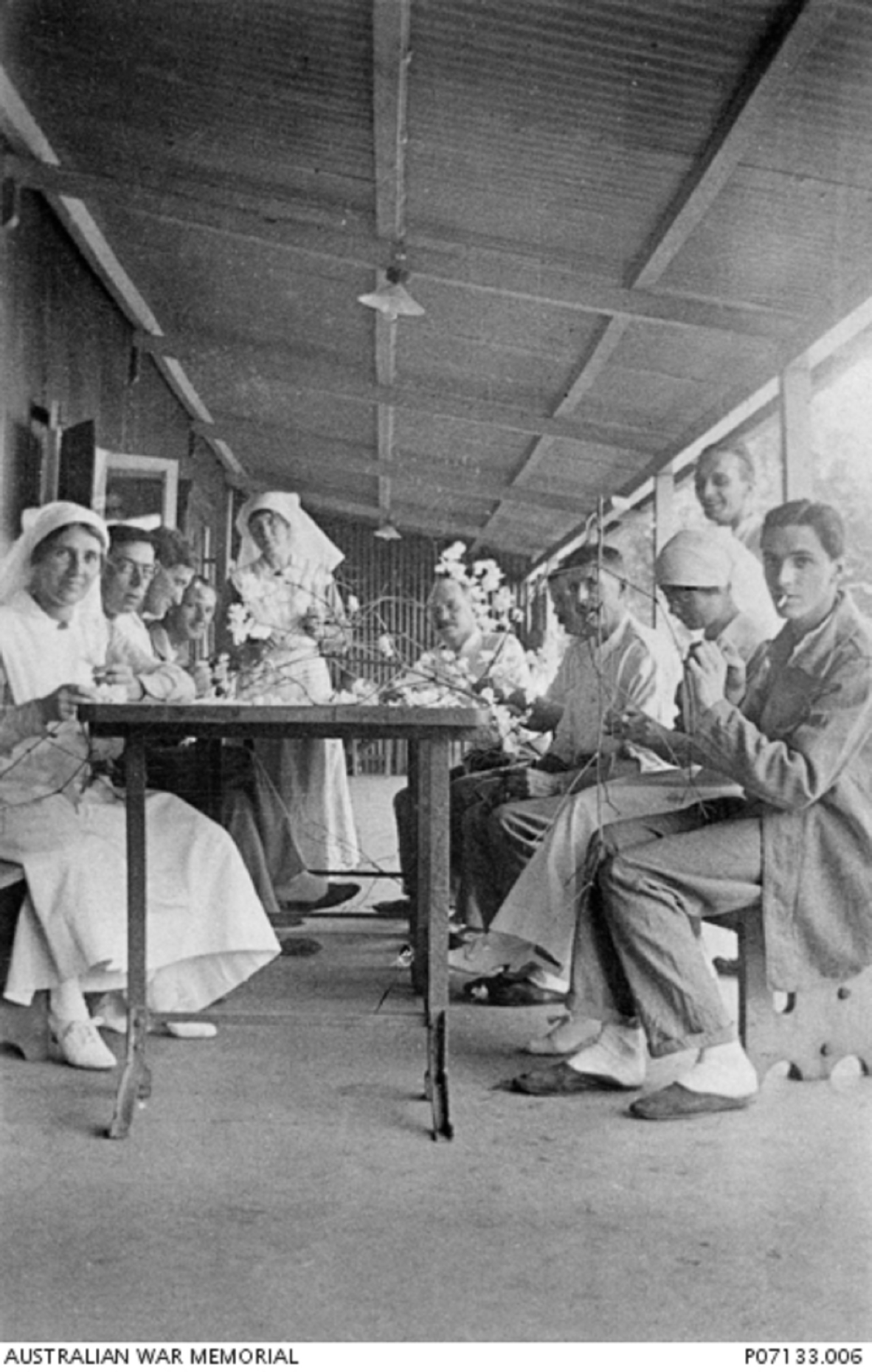
Alice left Bombay on 8 October 1919 and came home via Singapore. She disembarked from the “Montoro” in Brisbane on 18 November 1919. Her time in India had taken a toll on her health and she was discharged from service as ‘Medically Unfit’ on 11 February 1920. Upon her return, she went home to Mount Morgan but didn’t stay long before she took to the seas again. Her family farewelled her on Saturday 3 April 1920. This time she travelled on the White Star Line’s SS “Seuvic” to London to get married. The ship departed Australia in early May and arrived in London on June 20. Alice and Captain Charles Horace Woolsey, late of the Second King Edward’s Own Grenadiers, were married on 3 July 1920 at St Thomas’ Church Shepherds Bush. Presumably Alice had met Charles while in India as the King Edward’s Own Grenadiers were based in the Mesopotamia region and India during WWI.
Despite being married, Alice wished to continue her nursing career and in September 1933 Alice Woolsey was admitted as a Registered Nurse with the General Nursing Council of England and Wales. She worked in various private hospitals until the outbreak of WWII. Evidence suggests that Alice and Charles’s marriage failed as they appear to have been living apart by 1939. In the England and Wales Register of 1939, taken on 29 September that year, Alice was listed as living in Colchester, Essex in a house with five other people and she listed herself as ‘single’, whereas Charles is listed as living in Ealing. The reason for the separation is unclear.
In 1939, Alice had enlisted and was with a unit of Queen Alexandra’s Imperial Nursing Service. In February 1940 her unit was posted to a British General Hospital in the north of France.

March 12th, 1940, France: A letter to her sister Mary
“Well the unit I am with, left Colchester on Feb 28th and we are now somewhere in France. We had quite a good journey, interesting & uneventful, but glad to get to our destination and have a good nights rest and sleep. We are all settling down in our new surroundings and work.”
“I cannot tell you anything about where I am, as all letters are censored. Don’t worry about me.”
Following the fall of France, she was evacuated from her hospital back to England via Dunkirk. Her service assisting with the evacuation of wounded soldiers from Dunkirk earned her a Royal Red Cross Medal Second Class. These medals were awarded to Nursing Service members for special devotion and competency in performing their duties. She received the medal and the King’s Letter (King George VI) on 19 July 1945
June 12th, 1940: A letter to her sister Mary
“I was ... in France, in the North. We were all – the Queen Alexandras Military Nursing Sisters – evacuated from there over a fortnight ago, some stayed in the South, but the majority came back to England, myself included. Things got too hot for the women folk when the Germans got through into French Territory, we had to move off very quickly as the bombs were dropping around us. Daresay you have read about it in your papers.”
After her return to England, she lamented the loss of her belongings left behind in France during the rushed evacuation but was glad to be alive and to have survived the ordeal. By October 1940 she was in Egypt at No. 9 General Hospital, Heliopolis, Cairo in charge of a Medical Division and took the opportunity to see some of the sights.

April 2nd, 1941, London: A letter to her sister Mary
“Well I’m feeling very fit after 2 weeks leave in Palestine. Thought it a good idea to see that part of the world when I had the chance. One never knows when all leave will be stopped. I like Palestine. Jerusalem is a very fine place, full of interest & quite clean, even inside the old city walls. I saw the Garden of Gethsemane, Bethlehem, The Dead Sea, Nazareth & the Sea of Galilee. .... Palestine is quite different to Egypt. The orange groves are marvellous. There is plenty of grass growing, there are lots of trees which I love. But I think I’m glad I’m posted here in Egypt, with its polluted sand, flies and beggars. There are lots of tombs etc. to see here. “
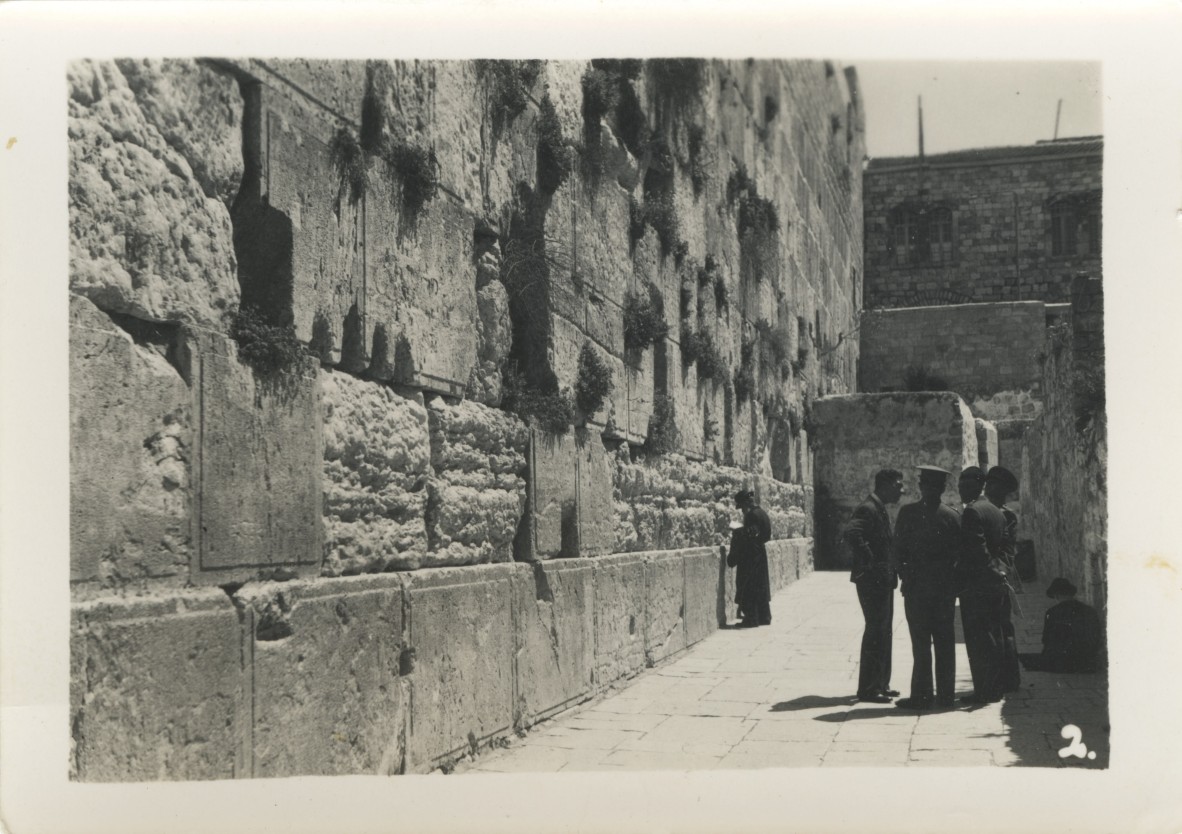
Keeping in touch with her family (she had three brothers and three sisters still living in Australia) was very important to her and she relished news from ‘home.’ It is possible the George she refers to in the following extract is her nephew (her sister Magaret’s son Cecil George Phillips) who served in the AIF with the 2/15th in the Middle East from 26 December 1940 until 27 February 1943. He then returned to Australia and served in New Guinea and the Southwest Pacific until the end of the war. He was discharged in October 1945.
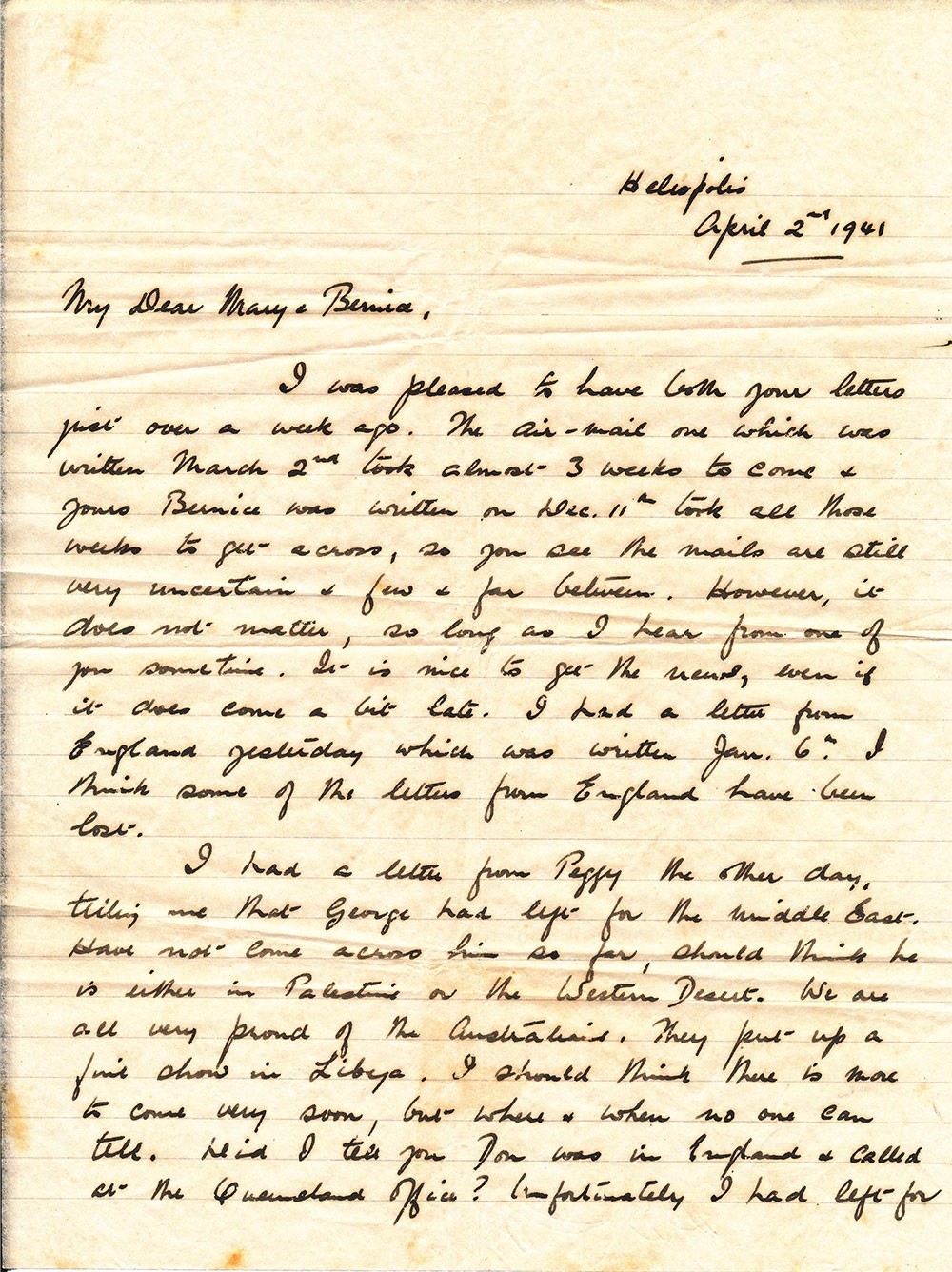
April 2nd, 1941, Heliopolis, Cairo: A letter to her sister Mary
“I had a letter from Peggy the other day, telling me that George had left for the Middle East. Have not come across him so far, should think he is either in Palestine or the Western Desert. We are all very proud of the Australians. They put up a fine show in Libya. I should think there is more to come very soon, but where & when no one can tell.”
She would not only serve in Egypt, but also Lebanon, Italy and Belgium before the end of the war in 1945.
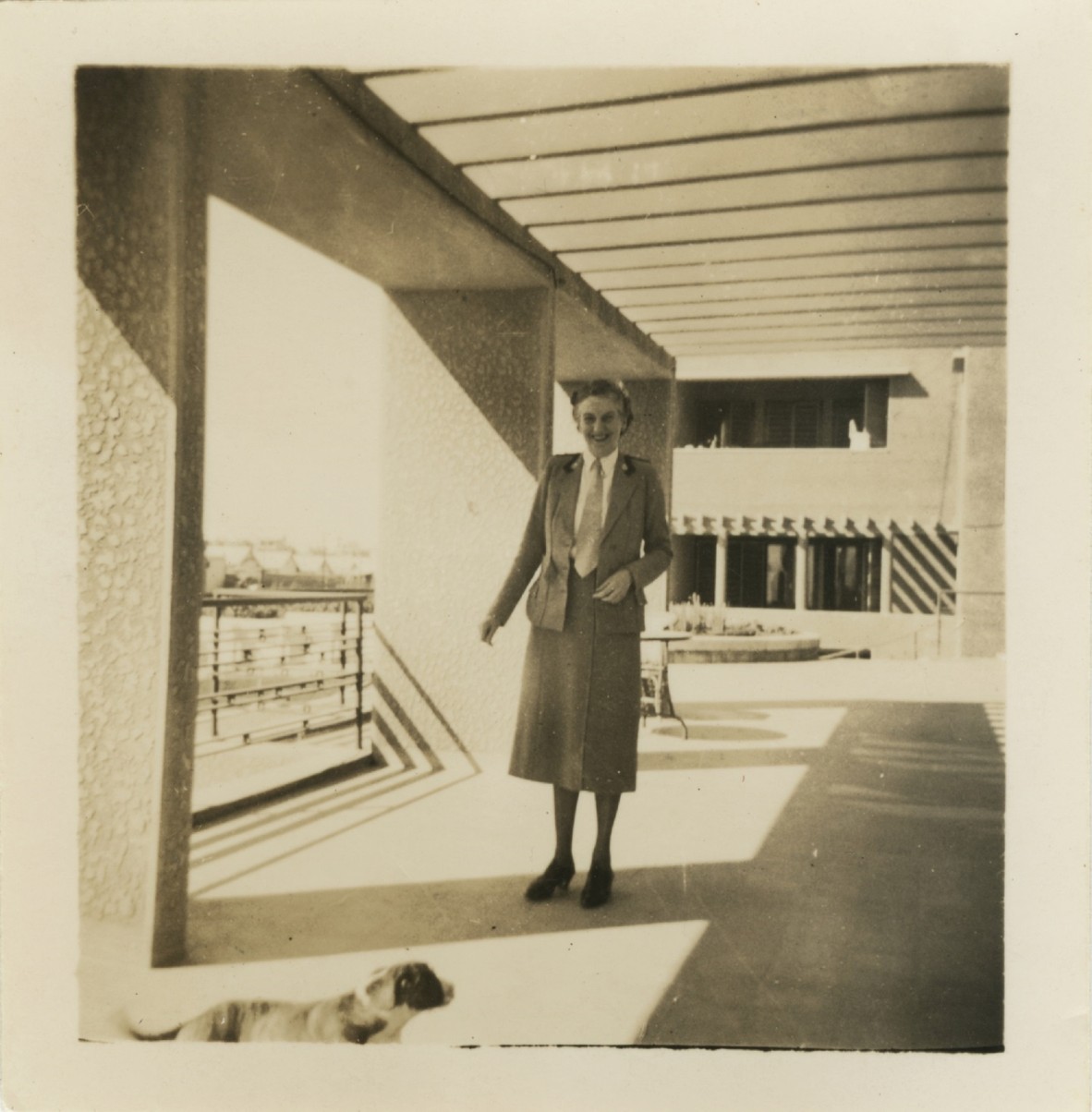
Alice was released from service in August 1948 having been granted the honorary rank of Sister by the British War Office. She made several trips to Australia visiting family, then in 1972 she left England and returned to Queensland, where her sisters Mary and Margaret (Peggy) were still living. Charles Woolsey died in England on 2 February 1982 and Alice died in Brisbane on 8th April 1982 aged 88 having given so much of herself and travelled so far from the Rockhampton Hospital where she trained. Her ashes are interned in the War Service Memorial at the Albany Creek Crematorium.
This year to commemorate Anzac Day we will be featuring stories of service of three Queensland heroes; Francis Leofric Armstrong (WWI), Alice Imison (WWI and WWII) and Vietnam Veteran Jon Fallows. We encourage you to share your stories of service with us. To learn more about this campaign and how you can contribute, as well as upcoming events, visit our website.